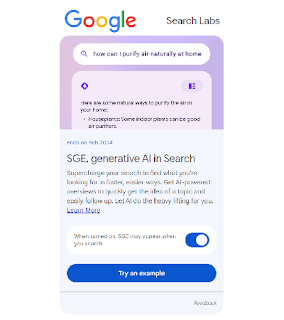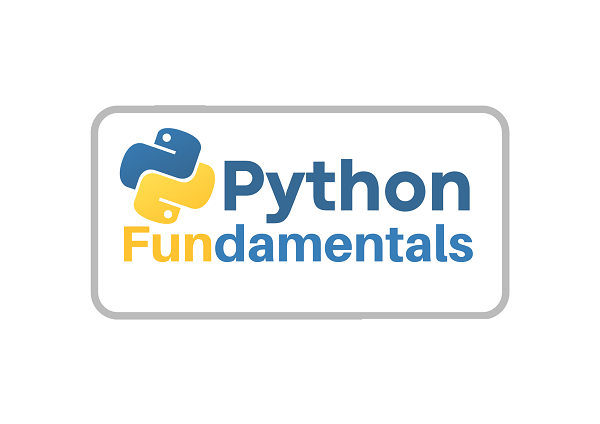Basics of Machine Learning for Kids: Fun and Simple Way
Teach your kids about Machine Learning in a fun and easy way! Our latest blog post explains the basics and includes examples that make learning a blast!
In this blog post, we will explore the basics of machine learning in a way that is easy for kids to understand. We will cover the different types of machine learning and provide examples for each level of difficulty. By the end of this post, kids will have a better understanding of what machine learning is and how it is used in our everyday lives.
In today's world,
machines are becoming more intelligent and ubiquitous. From voice assistants to
self-driving cars, we are surrounded by intelligent machines that are powered
by machine learning. But what is machine learning, and how does it work? In
this blog post, we will introduce the basics of machine learning in a way that
is easy to understand for kids. We will explore the different types of machine
learning, and how it works, and give some examples to help kids grasp the concepts.
Machine learning is like
teaching a computer to learn like a human does. Humans learn by experience - we
learn from examples, mistakes, and feedback. Machine learning algorithms work
in a similar way. They learn from large amounts of data, called training data,
and use that learning to make predictions or decisions on new data.
For example, let's say
you wanted to teach a machine learning algorithm to recognize different types
of fruit. You would give it a lot of pictures of different types of fruit, with
labels telling the algorithm which fruit is in each picture. The algorithm
would use this data to learn what each fruit looks like so that when you give
it a new picture of a fruit it hasn't seen before, it can make a good guess as
to what fruit it is based on what it has learned from the training data.
Here are some examples of
machine learning in everyday life that anyone might understand:
When you type a search
query into Google, the search results you see are personalized based on what
Google's machine learning algorithms have learned about your interests and
preferences.
When you use a voice
assistant like Siri or Alexa, they use machine learning to recognize your voice
and understand your commands.
When you play a game like
Minecraft or Roblox, the characters and objects in the game are controlled by
machine learning algorithms that have been trained to make decisions based on
the game's rules and objectives.
What are the different
types of machine learning?
There are three main
types of machine learning: supervised learning, unsupervised learning, and
reinforcement learning.
1. What is Supervised
Learning?
Supervised learning is a
type of machine learning where the machine is trained on a labeled dataset.
This means that the data has already been labeled with the correct answers, and
the machine learns to make predictions based on this labeled data.
Supervised learning can
be explained using a simple example of recognizing animals. Suppose we want to
teach a computer to recognize different animals like a dog, cat, and rabbit. We
can give the computer pictures of these animals and label them with their
names. This labeled data is used to train the computer, and it learns to
recognize these animals based on the features of their pictures. Later, we can
give the computer a new picture of an animal, and it will use its learning to
predict which animal it is.
An easy
example for supervised learning could be recognizing different types of fruits
like apples, bananas, and oranges. The labeled data can be pictures of these
fruits with their names. The computer is then trained on this data to learn to
recognize these fruits based on their features.
A
medium-level example for supervised learning could be classifying different
types of flowers like roses, lilies, and sunflowers. The labeled data can be
pictures of these flowers with their names. The computer is then trained on
this data to learn to recognize these flowers based on their features, such as
the shape of petals and color.
A hard-level
example for supervised learning could be predicting the price of a house based
on its features like the number of bedrooms, the area of the house, location,
etc. The labeled data can be the prices of houses with their features. The
computer is then trained on this data to learn to predict the price of a new
house based on its features. This is a challenging task as it requires the
machine to learn complex patterns from the data.
2. What is unsupervised
learning?
Unsupervised learning is
a type of machine learning where the machine is trained on an unlabeled
dataset. This means that the machine has to find patterns and structure in the
data on its own.
To understand unsupervised learning, we can use a simple example of sorting objects. Imagine you have a bunch of different toys, but you don't know what each one is called or how they relate to each other. You could try to group them based on their size, shape, or color, without anyone telling you which group they belong to. This is similar to unsupervised learning, where the machine has to figure out patterns and relationships in the data without any labels or guidance. The goal is to find groups or clusters of similar data points, without knowing in advance what those groups should look like.
Here are some examples of
unsupervised learning at different levels of difficulty:
Easy
example: Sorting fruits by color
Suppose you
have a basket of fruits with different colors, such as apples, oranges, and
bananas. You could sort them into different groups based on their color,
without anyone telling you which group each fruit belongs to. This is similar
to unsupervised learning, where the machine tries to find patterns or
similarities in the data without any labels.
Medium
example: Identifying different types of animals
Imagine you
have a bunch of pictures of different animals, but you don't know what each
animal is called or what features they have in common. You could try to group
them based on their characteristics, such as their size, shape, or habitat.
This is similar to unsupervised learning, where the machine has to identify
different types of data points based on their similarities or differences.
Hard
example: Discovering new patterns in a dataset
Suppose you
have a large dataset with many different variables, such as customer
information, product sales, and marketing campaigns. You could try to find new
patterns or relationships in the data, such as which products are more popular
among certain groups of customers, or which marketing campaigns are more
effective in different regions. This is similar to unsupervised learning, where
the machine has to explore the data and find new insights or patterns that were
not known before.
3. What is Reinforcement
Learning?
Reinforcement learning is
a type of machine learning where the machine learns through trial and error.
The machine receives feedback in the form of rewards or punishments based on
its actions, and it learns to make better decisions in order to maximize the
rewards and minimize the punishments.
For example, imagine a robot learning to play a game. The robot makes a move and receives a reward if it wins or a punishment if it loses. Over time, the robot learns which moves are more likely to result in a reward and which moves are more likely to result in a punishment. This way, the robot can improve its performance over time by making better decisions.
Another
example is a self-driving car learning to navigate through traffic. The car
receives rewards for reaching its destination quickly and safely, and
punishments for getting into accidents. By learning from its mistakes and successes,
the car can become better at navigating the roads and avoiding accidents.
Summary
Machine learning is a
type of artificial intelligence that allows machines to learn from data without
being explicitly programmed. By understanding the basics of machine learning,
kids can gain a deeper appreciation for the technology that powers our modern
world.
Remember, it's all about teaching machines to recognize patterns and make predictions based on those patterns.




Comments
Post a Comment